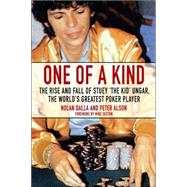Stuey Ungar, the son of a Lower East Side bookie, grew up in a New York of the 1950s and '60s that was straight out of Damon Runyon. By his early teens, he had dropped out of high school and was spending most of his time in the city's under- ground car








